Wood, a porous natural material, is vulnerable to rotting and decaying when exposed to moisture. When it takes in moisture, the wood may warp or crack due to expansion and contraction.
It’s important to note that different types of wood react differently to moisture. Choosing the wood species that are naturally resistant to water & finishing them with the proper woodcare product can produce very watertight results.
This type of wood is particularly useful in outdoor and high-humidity environments where regular wood would quickly rot and deteriorate.
Moisture-resistant wood is also popular for indoor applications such as bathroom vanities and kitchen countertops, where moisture is more common.
There are several types of water-resistant wood available, each with its own unique characteristics and benefits. In this article, we will explore the different types of wood that are naturally resistant to water and the benefits of using them.
What Happens When Wood Comes in Contact With Water?
Wooden furniture and floors are especially vulnerable to the destructive effects of water. In addition to soaking the wood, it seeps into the grain, leading to many other issues. Everyone knows that water is a potential killer.
However, it’s not just people who are harmed; wood also gets harmed. While water can damage wood in several ways, the following four are the most common.
Water-Resistant Vs Water Proof Wood?
Water-resistant wood is wood that has been either treated or naturally possesses properties that make it resistant to moisture and water damage. It is capable of withstanding exposure to water for a certain extent of time without suffering significant damage.
Water-resistant wood is typically used in outdoor and high-humidity environments where regular wood would quickly rot and deteriorate.
Waterproof wood, on the other hand, is wood that has been completely sealed and treated to be completely impermeable to water. It is not capable of absorbing water and will not suffer any damage from exposure to water.
Waterproof wood is typically used in applications where the wood will be constantly or frequently exposed to water, such as in boatbuilding or in the construction of aquatic structures.
It is important to note that while moisture-resistant wood can withstand some exposure to water, it is not completely waterproof and may still suffer damage if it is constantly or frequently exposed to water.
Waterproof wood, on the other hand, is completely impervious to water and will not suffer any damage from exposure to water.
What are the Benefits of Using Water-Resistant Wood?
Here are some benefits of using water-resistant wood:
List of Best Water-Resistant Wood For Indoor & Outdoor Use
Here is the list of wood that is naturally resistant to water & moisture.
1. Ipe Wood
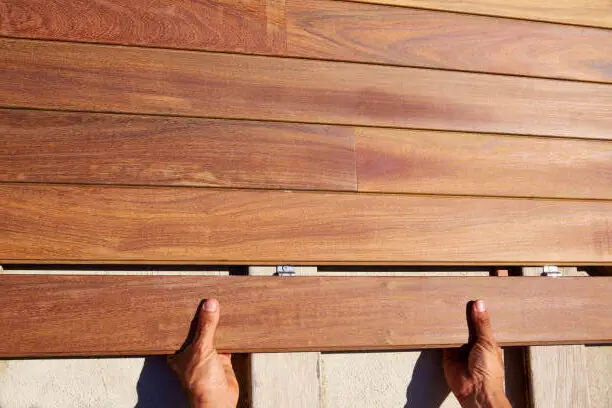
Ipe wood’s increasing popularity in the United States can be attributed to the hardwood’s many desirable characteristics, including its strength, resilience to water, and resistance to scratches.
Particularly well-suited for use as flooring or decking because of its dense hardness. Ipe wood is naturally oiled, which makes it resistant to moisture and water damage & decay, and insect infestation.
People who don’t like the scent of real wood will appreciate this wood for its lack of odor. It is not shiny, but its high durability makes it suitable for a wide variety of applications, from bridges to stairs, baseboards, and ceilings.
It is recommended to wait at least 20 years between applications of stain on Ipe wood, as it is exceptionally long-lasting. For these reasons, as well as being the hardest hardwood, it is naturally resistant to rot, warping, and cracking.
Many people consider it the hardest wood, making it extremely challenging to deal with.
The strong, rigid, and densely compressed grain of the wood makes it impermeable to water compared to other woods. Its grain is consistent and smooth.
It is important to note that while ipe wood is resistant to moisture and water, it is not completely waterproof.
If it is constantly or frequently exposed to water, it may still suffer some damage. To help protect ipe wood from water damage, it is recommended to apply a water-repellent finish to the wood and to ensure that any water that accumulates on the wood surface is allowed to drain away.
Regular cleaning and maintenance can also help to protect ipe wood from moisture and water damage.
2. Black Locust
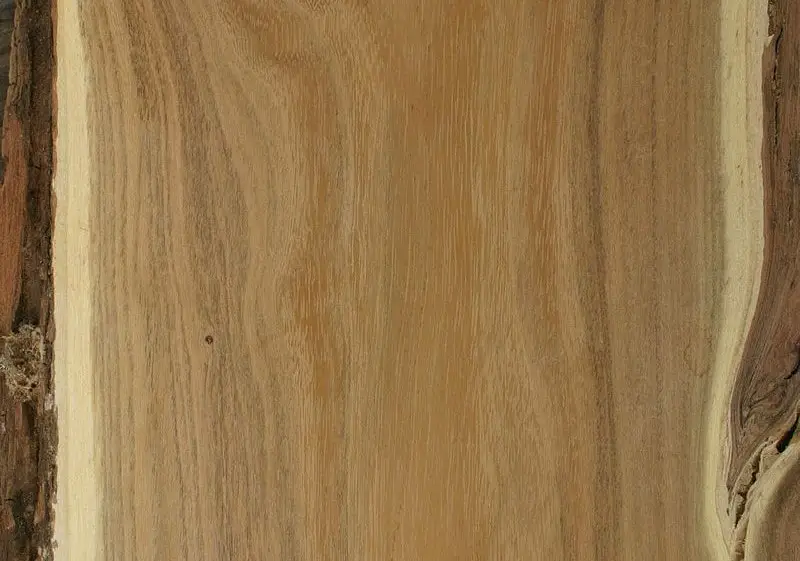
Black Locust (Robinia pseudoacacia) is a type of hardwood tree that is native to the eastern United States. It is a popular wood and is, therefore a great option if you’re looking for a waterproof, robust, and very durable wood.
The minimal deformation and shrinkage of Black Locust wood make it appealing for outdoor use and as construction timber. It possesses very good dimensional stability even after prolonged submersion in water.
Wood from the Robinia tree often mislabeled as “acacia,” has become nearly the industry standard for outdoor projects like patio sets and other outdoor furnishings that don’t require covering from the elements. It is a popular choice for outdoor applications such as decking, fencing, and outdoor furniture.
Long-term exposure to weather and moisture, as well as frost and cold, are no match for Robinia wood. It has a service life of 15–25 years without any treatment at all.
3. Oak
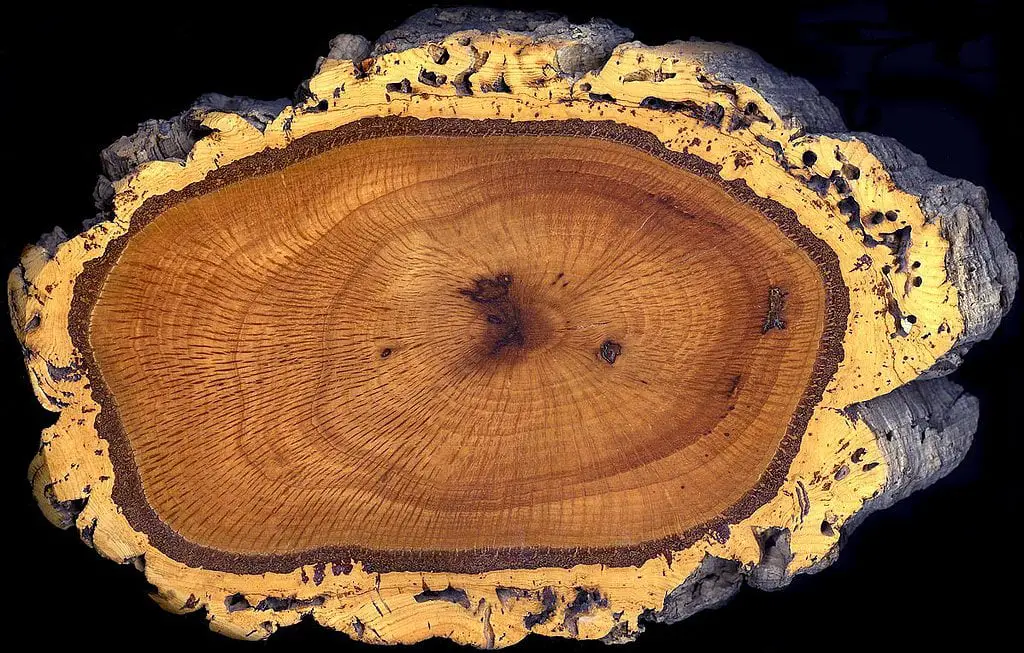
Water doesn’t seem to have much of an effect on white oak. As a naturally water-resistant wood, oak is a perfect choice for decks and patios, two outdoor settings where you want the strength and beauty of the oak.
White oak is excellent for flooring since it is resistant to water, dents, and scratches. It requires more effort than other hardwoods, but the end result is worth it. In addition, its closed-grain structure makes it resistant to moisture. This additional layer of defense against water is helpful but only partially guaranteed by the water resistance provided by nature. A sealer is recommended to be applied to all hardwood floors to increase their resistance to moisture.
White oak doesn’t decay easily and lasts a long time. Compared to its American relative, the European white oak is a more sturdy wood species. Whitewood is extremely durable and, with the right care, can survive the elements year-round.
White oak has a minor negative characteristic: it contracts and expands over time. It’s a better choice for flooring because it doesn’t expand and contract as much as red oak does.
4. Teak
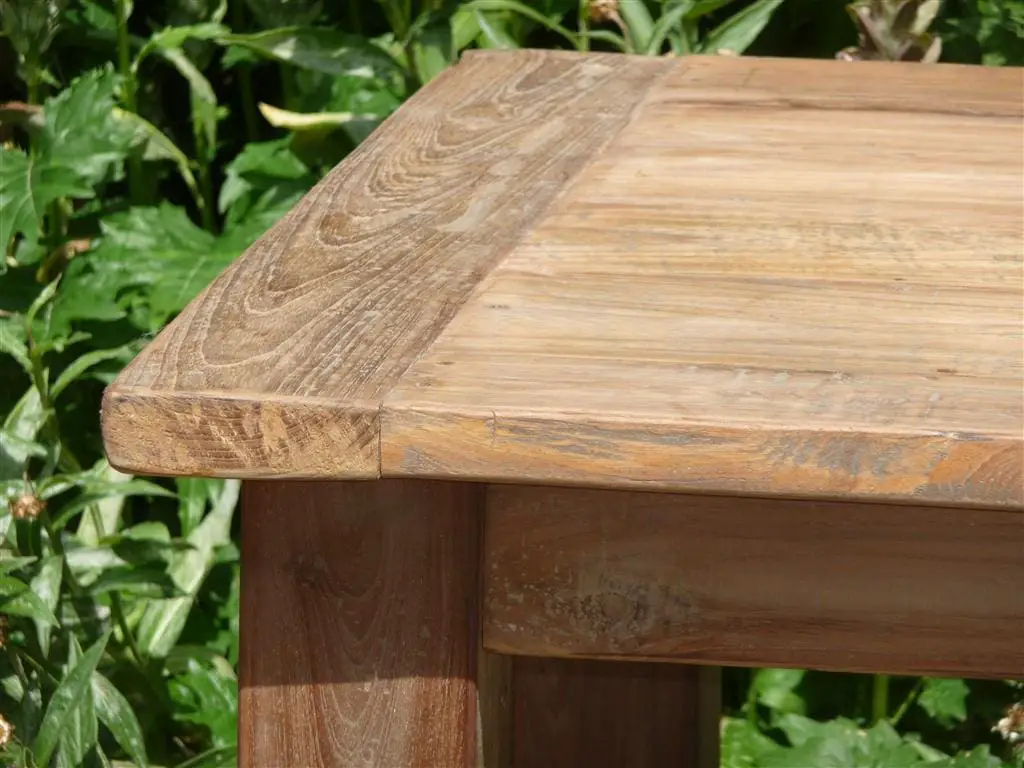
Teak (Tectona grandis) is a tropical hardwood that is native to South and Southeast Asia. Due to its durability and resistance to rot and decay, this wood is ideal for outdoor use.
Because of its great resistance, it is protected from the weather and won’t dry out and split as other materials might. The most common hue is a warm golden brown. However, it can also be seen in a variety of reddish hues.
It’s sturdy and can withstand anything from rain and salt water to temperature swings and pests without succumbing to cracking or bursting.
The natural oil it contains makes it waterproof, thus, its resistance to water and breaking is exceptionally good; which makes up for its relatively high price.
5. The Afrormosia Wood
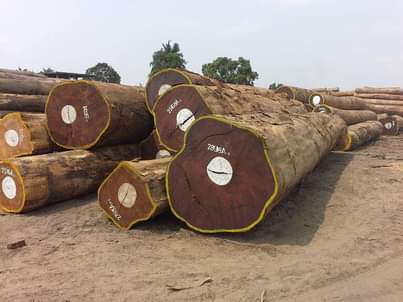
African Teak, also known as Afrormosia wood, is an African hardwood. The fact that it resembles teak so closely has led to its misnomer: African Teak. It’s a great substitute for teak wood that looks and feels just as nice.
It’s a cheaper alternative to teak that has many of the same benefits. Despite its lack of popularity in the United States, those who have had the opportunity to work with it agree that it is a stunning material. To avoid getting in trouble with the law, only purchase afrormosia from legitimate US-based businesses.
Although it is not currently considered a threatened or endangered species in Africa, that could change in the near future. In spite of the stringent rules, dependable sources of this wood can be discovered in the United States.
For ages, Africans have relied on it to construct boats, and now it is a popular choice for European homeowners who seek long-lasting wood with minimal upkeep.
6. Cedar
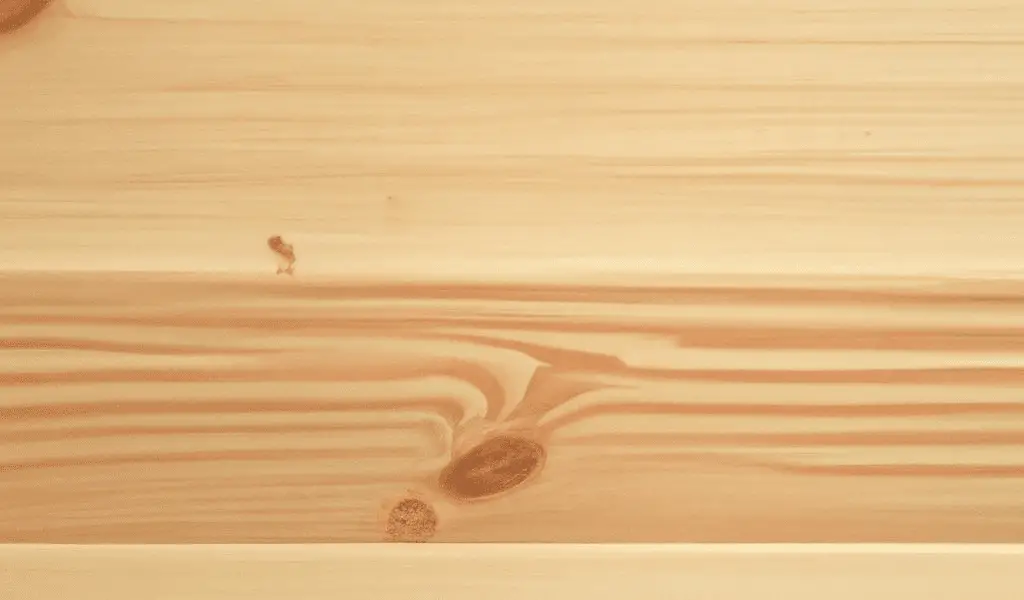
Like many other hardwoods, Cedarwood is an excellent choice for areas prone to moisture. Cedarwood is commonly utilized for outdoor applications including flooring, furniture, and buildings. It has a well-deserved reputation for being impervious to the effects of the elements.
When compared to other cedar hardwoods, Western Red Cedar stands out as the most resilient and water-resistant option. The WRC has a homogeneous texture and fine, straight grain. Cedarwood is inherently resistant to water and won’t rot when subjected to the elements such as rainfall, snow, storm, and summer heat due to its low density.
The material’s resistance to the elements makes it popular for outdoor applications, such as fencing. This cedar wood won’t warp, bend, or become brittle if properly cared for and exposed to the elements. For use as a foundation for paints and stains, it’s ideal.
7. Pink Peroba
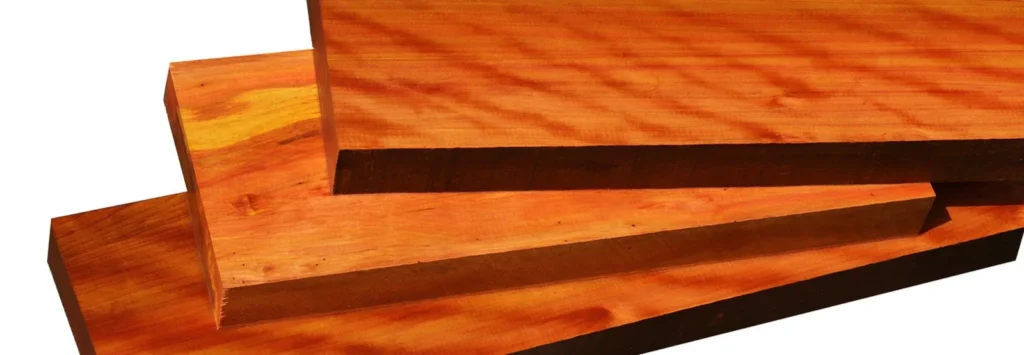
There is another type of fine wood that is suitable for use in damp areas, and that is peroba-rosa. This wood’s brighter, pink and orange tones are striking and distinctive compared to those of Ipê and Cumaru. There is a lot of it, so it’s really sturdy and resistant to the elements.
Many types of outdoor furniture, including tables, stools, cupboards, shelves, doors, etc., are constructed from Peroba-Rosa.
It has a smoother texture than other similarly long-lasting woods, and its surface can be finished in a wide variety of ways, from rustic to luxury. Using Pink Peroba-Rosa wood in an outdoor setting will undoubtedly elevate the area’s aesthetic quality.
8. Larch
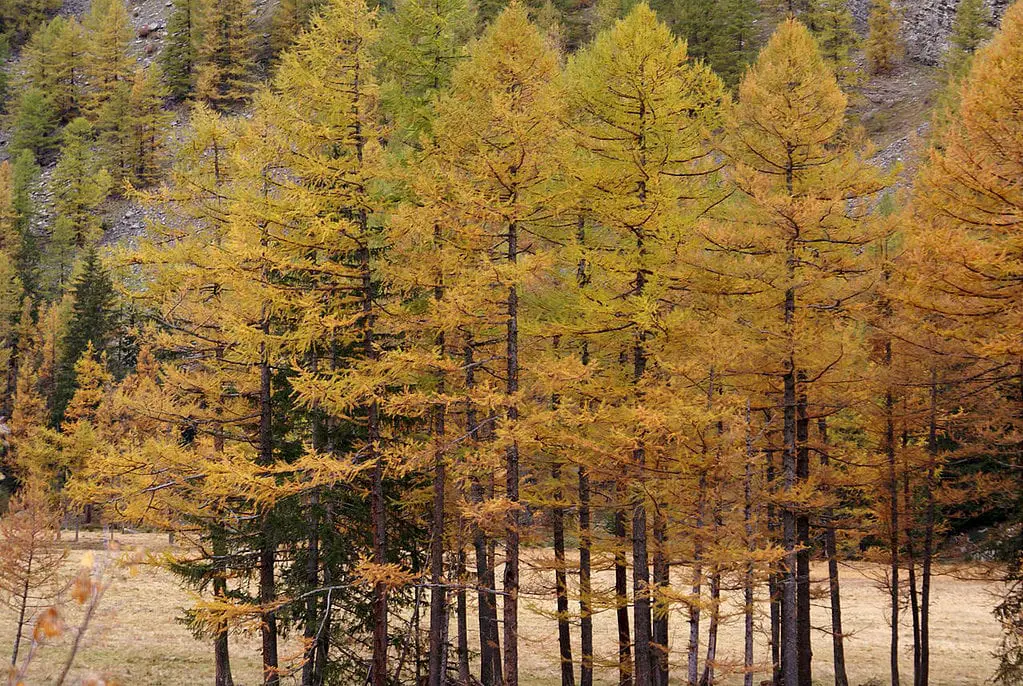
Rain, heat, and wind are no match for larch wood’s durability. The wood just takes on a silvery patina when exposed to the elements. In order to be used for roofing or as shingle material, the wood must be extremely durable.
Larch wood is one of the most popular building materials, as it’s used for anything from simple houses and coatings to canoes and bridges in wet climates. Larch wood has long been prized for its durability and attractive appearance in construction. It is also highly resistant to air and moisture, and insects rarely attack it.
Larch wood’s waterproof characteristics make it useful for a wide variety of applications, including flooring, lawn furniture, a barrier, roof structures, and bridge, ships, and boat construction. The longevity and resistance to the elements are two of the reddish wood’s greatest benefits.
Larch wood can be used for both indoor and outdoor carpentry because it is very resistant to water. It can also be used for telephone and light poles, bridges, and walkways. Wine barrels were traditionally made from it in some parts of France and Italy, and this is where its long history of use in construction really shines.
Conclusion
Most of the water-resistant wood available in the market may be expensive as compared to normal wood but once they are crafted it will last for generations.
Always remember that today, ordinary wood can be made more water-resistant.
